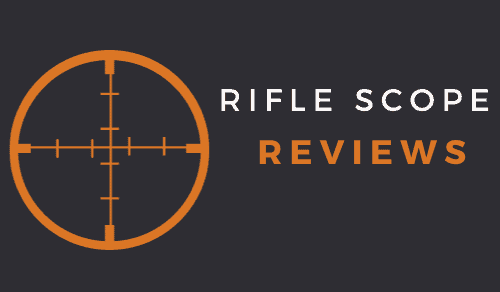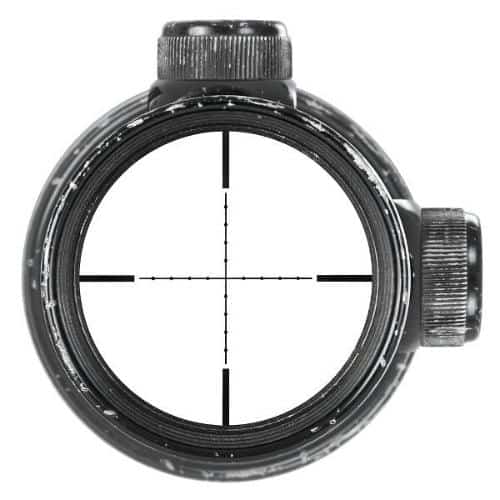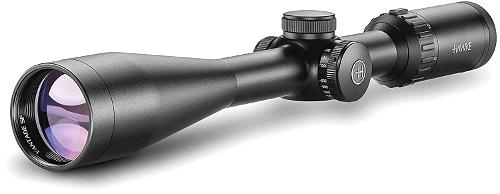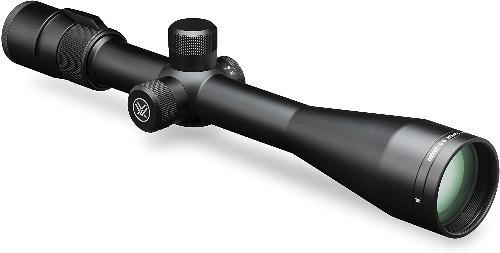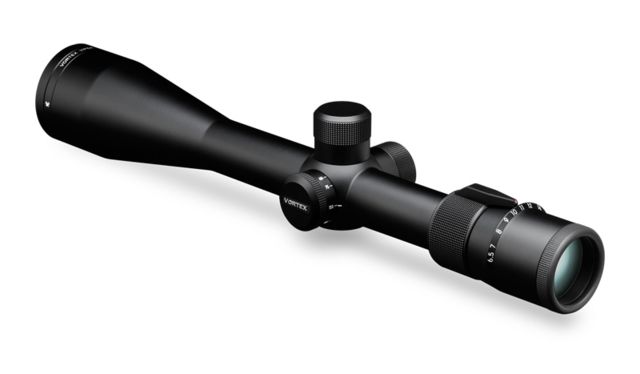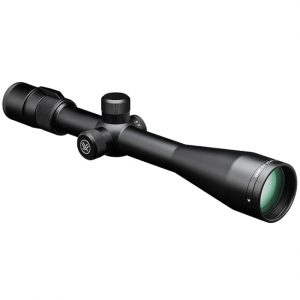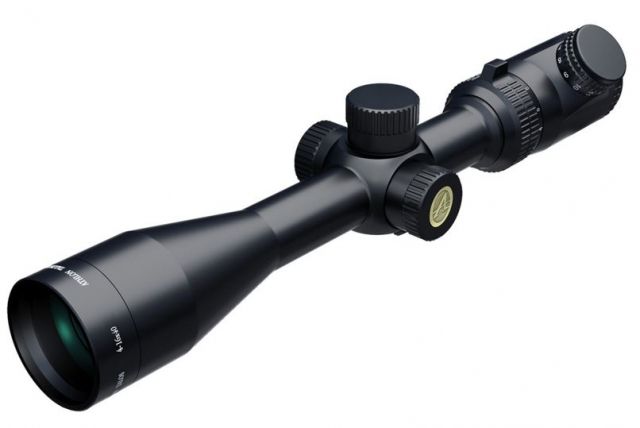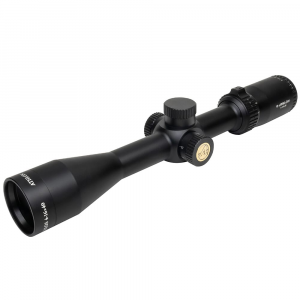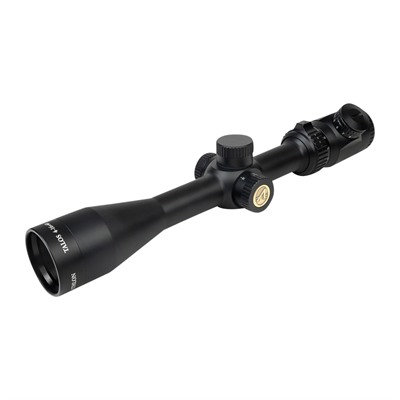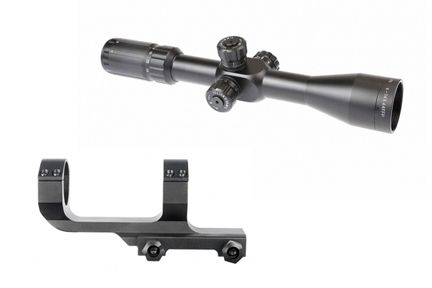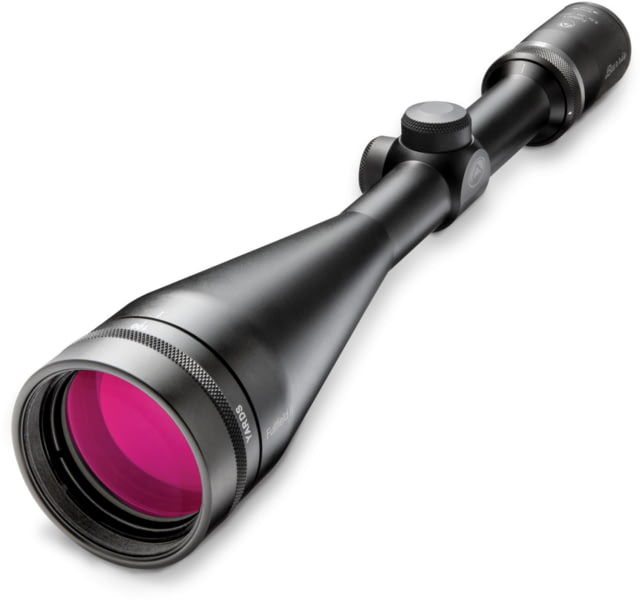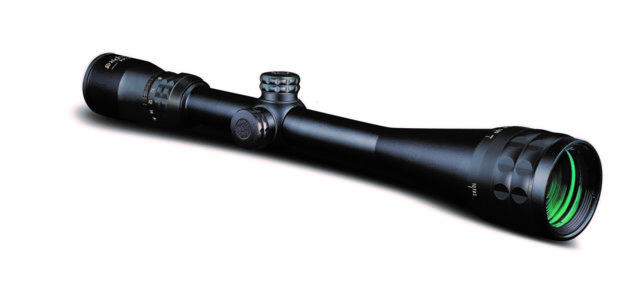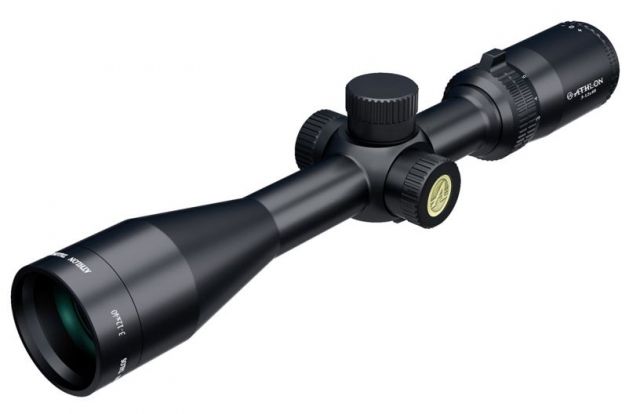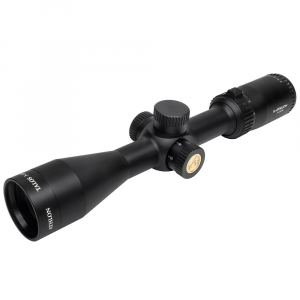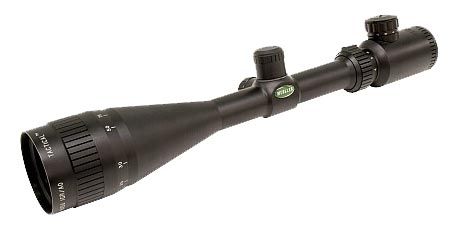As an Amazon Associate I earn from qualifying purchases. Amazon and the Amazon logo are trademarks of Amazon.com, Inc, or its affiliates.
Like any other industry, technology is a driving force in the sporting optics industry. Those technological advances, combined with outside-the-box thinking, mean that new rifle scopes designs and products are introduced each year. One area where I’ve seen the most changes is within the arena of scope reticle designs. However, while new models come and go each year, one reticle design that has stood the test of time is the mil dot reticle.
My goal in this article is to write about and review the ten best mil dot scopes under $500. However, before we can get to that topic, we’ve got to dive a little deeper into an explanation of precisely what constitutes a mil-dot scope.
Exactly What is a Mil Dot Scope?
Although you may see all kinds of different definitions online, simply defined, a mil-dot scope is a riflescope equipped with a mil dot reticle.
Typically, the mil-dot reticles are more commonly seen with long-range shooting, but the reticle also has its place in other shooting scenarios (which I’ll get into later).
Technically speaking, the mil-dot reticle is what defines an optic as being a “mil dot scope,” and any scope equipped with a mil-dot reticle meets that broad definition.
A Look at the 10 Best Mil-dot Riflescopes under $500
Before we start discussing scopes, I wanted to preface my suggestions below with a few comments.
- There are many mil-dot scopes on the market priced under $500, but not all of them are great buys.
- I’ve tried to identify the scope models under $500 that offer either a good value for the money or are a good deal based on their features or performance.
- I’ve also tried to offer scope options representing a cross-section of various price points and models to fit almost every budget.
Now that we’ve covered the very basics let’s dive into the topic of the most highly rated mil-dot scopes on the market for under $500. I’ll get into more specifics about topics like the mil dot reticle, its pros, and cons, how to use one, etc., in the Mil-Dot Scope Buyer’s Guide section below.
Top Rated Mil-Dot Riflescopes | ||||
Scope | Image | Power Range | Focal Plane | Jump to this Model |
Vortex Viper 6.5-20x50 PA | 6.5 to 20 | Second Focal Plane | ||
Mueller 8-32x44 Side Focus Tactical | 8 to 32 | Second Focal Plane | ||
Athlon Talos 4-16x50 | 4 to 16 | Second Focal Plane | ||
Bushnell Tac Ops LRS 10x40 | Fixed 10 Power | Second Focal Plane | ||
Hawke Vantage SF 6-24x44 | 6 to 24 | Second Focal Plane | ||
Primary Arms SLx 4-14 FFP | 4 to 14 | First Focal Plane | ||
Burris Fullfield II 6.5-20x50 | 6.5 to 20 | Second Focal Plane | ||
KonusPro 6-24x44 | 6 to 24 | Second Focal Plane | ||
Athlon Talos 3-12x40 | 3 to 12 | Second Focal Plane | ||
Mueller 4-16x50 AO Tactical | 4 to 16 | Second Focal Plane | ||
Vortex Viper 6.5-20×50 PA
The Vortex Viper 6.5-20×50 PA is one of my favorite mil-dot scope options because it’s a fantastic deal for the money. Built on a 30mm tube, this scope is typically priced right at the very top end of a $500 budget, and for a good reason.
This model offers excellent optical quality for the money and is available in two different reticle configurations:
- Dead-Hold BDC
- Mil dot
For this article’s purposes, I’m focusing on the mil-dot reticle version, which is a second focal plane model with a Vortex part number of VPR-M-06BDC.
Although this scope is geared towards long-range shooting, it works equally well for hunting or target shooting. The Viper 6.5-20X50 PA model weighs in at nearly 22 ounces and offers a side focus that adjusts down to 50 yards.
| Pros | Cons |
| Excellent optical quality for a sub-$500 scope
Covered by an outstanding lifetime warranty Side Focus |
The eye relief is advertised as 3.1 inches, which isn’t bad, but could be better.
A bit on the heavy side at 21.6 ounces. |
Here are some of the best deals and specials I could find on this Vortex scope:
Mueller 8-32×44 Side Focus Tactical (Model MT83244)
If you’re shopping for a second focal plane MD scope in the sub-$500 price point and want one of the highest magnification ranges on the market, then the Mueller 8-32×44 SF Tactical might be worth a look.
Built for long-range shooting, this scope features a powerful magnification range of 8-32 power. This model is built on a 30mm tube and offers a side focus that will focus all the way down to 10 yards.
The optics on this scope are better than expected for a model in the sub-$300 range, and it offers several features that are usually only seen on more expensive scopes.
This particular Mueller model (MT83244) is only available with a mildot reticle.
| Pros | Cons |
| Good glass for a sub-$300 optic
Side focus that goes down to 10 yards A generous 4″ of eye relief Covered by a better than average warranty |
The tube is nearly 19 inches long, so this is not a compact model
While the glass quality is better than what you would except for this price point, you start to see some edge distortion at the 28X to 32X power ranges. |
Here’s a list of the best discounts and deals I was able to locate on this particular Mueller riflescope:
Athlon Talos 4-16×50 (Model 215009)
If you’re on a strict budget of less than $200, then the Athlon Talos 4-16×50 is another second focal plane (commonly written as SFP) mildot riflescope worth checking out. This scope offers a mid-power magnification range that is versatile enough for just about any shooting application.
This scope is built on a 1-inch tube and features a side focus that adjusts from 15 yards to infinity. The optical quality is about what you would expect for a scope costing less than $200, but it’s certainly better than some other models I’ve seen in this price range.
This optic is an excellent choice for the sportsman who enjoys hunting and some long-range shooting. This particular Talos model is only available with a mildot reticle.
| Pros | Cons |
| Ultra versatile magnification range
Excellent option as a budget-oriented mil-dot optic Covered by a good warranty |
A bit on the heavy side for a 1-inch tube
The eye relief range is 3.3 to 3.8 inches, which could be better. There is some optical distortion seen at the upper end of the magnification range, but that’s to be expected in a scope in this price range. |
If you are considering this Athlon scope, there here’s a list of places I located it for sale:
Bushnell Tac Ops LRS 10×40 (Model BT1040)
I don’t think a list of top-rated mil-dot riflescopes is complete without a fixed power option, so here’s my fixed power recommendation: the Bushnell Tac Ops LRS 10×40 scope.
Built on a 1-inch tube, this scope features a fixed 10X power mated to a 40mm objective. This model also features exposed tactical turrets for easy windage and elevation adjustments.
If you prefer a simple scope without a power range or focus to adjust, this fixed 10 power second focal plane scope may be worth a look. Some might look at a 10X power as being on the low side for magnification, but I’ve seen more than one military-trained long-range shooter ring steel at 500 to 800 yards (and beyond) with a fixed ten power scope.
As with most fixed power scopes, this model utilizes a fixed parallax setting of 100 yards.
| Pros | Cons |
| A simplistic design that is simple to operate. No rings to turn or adjust. Just point and shoot.
Like most fixed power scopes, this model offers a wider than average Field of View. It seems very well built and durable |
Heavier than expected for such a compact scope.
Fixed parallax Decent warranty but not quite as good as brands like Leupold or Vortex. |
This particular Bushnell model can sometimes be hard to locate for sale, but here are a few places that where I found it on sale:
Hawke Vantage SF 6-24×44 (Model 14162)
Another wallet-friendly scope option in this group is the Hawke Vantage SF 6-24×44. Hawke Optics is based in the UK, so they don’t have the same level of name brand exposure in the U.S. as a Bushnell or Nikon. However, Hawke has a considerable following in the UK and makes a good product for the money.
The Vantage series is part of Hawke’s lower-tiered scopes but still offers a good option for a second focal plane, sub-$500 mildot scope. Hawke actually offers this scope in a unique mil-dot reticle variant called a half mil-dot reticle. The half mildots are smaller than traditional mildots and are positioned closer together. However, it’s not hard to transition from using full mils over to half mils.
This scope is built on a 1-inch tube and features a side focus that adjusts from 15 yards to infinity. The optical quality on the Vantage SF is better than average for a sub-$300 riflescope.
| Pros | Cons |
| Above-average optical quality for the money
Well built scope with an excellent no-fault lifetime warranty. Side focus down to 15 yards |
While the half mil reticle is technically a mil-based reticle, it’s not quite the same as a traditional mildot reticle.
Hawke is not a household scope name brand. |
If you’re in the market for this Hawke scope, here are a few places that have them for sale:
Primary Arms SLx 4-14 FFP (Model PA4-14XFFP)
If you happen to prefer a first focal plane scope with a mildot, then the Primary Arms SLx 4-14×44 FFP-MD scope might be one to consider.
Built on a 30mm tube, this Primary Arms model is the only first focal plane (FFP) scope that I included on this list. If you aren’t sure what an FFP scope is, check out this article.
This scope is a cost-effective FFP option that is available with a mildot reticle. The 4-14 power range is versatile enough for almost any shooting scenario, and the first focal plane design means that the reticle is “true” throughout the entire power range.
Although this particular scope is built in China, the optical quality is extremely good for a sub-$250 scope. Also, it is worth noting that Primary Arms features a stellar lifetime warranty.
| Pros | Cons |
| Built like a tank, this scope is very durable and rugged.
It’s an excellent FFP option for the money. It comes with a fabulous warranty. |
Built like a tank can have a downside, and that’s the weight. This scope weighs nearly 24 ounces.
This scope is prominently advertised as being made for use on an AR platform but performs just as well on a bolt action rifle. The 3″ to 3.2″ inch eye relief could be a little better. The Primary Arms brand is not as well known as some of the other major optical brands. |
Here are a few locations where this Primary Arms scope is listed for sale:
Burris Fullfield II 6.5-20×50 (Model 200193)
The Burris Fullfield II scope in a 6.5-20×50 configuration is another very good option in this scope category.
This scope is another excellent budget-friendly choice for shooters or hunters looking for a mil-dot scope for long-range shooting and hunting. This model is built on a 1-inch tube and features the Burris Ballistic Mil-Dot reticle. While this reticle is not exactly made like a traditional mildot, it’s close enough and functions just like a conventional mildot reticle.
The optical quality is better than expected on a scope in the sub-$250 price range. This model features an adjustable objective versus side focus, but I can live with that minor inconvenience.
And, weighing less than 20 ounces, it’s not overly heavy if you happen to be hunting or shooting on the go.
| Pros | Cons |
| Relatively lightweight for the size.
More than decent optical quality for this price range Excellent magnification power range for the costs |
Not exactly a traditional mildot reticle
It would be an absolute steal of a deal if it came equipped with side focus. The Burris warranty has been hit or miss in my experience. |
If you’re shopping for this Burris Fullfield II scope, here are a few for sale:
KonusPro 6-24×44 (Model 7259)
The KonusPro 6-24×44 is another budget-friendly mildot-based riflescope that may be worth a look if your budget is under $150.
This model features a popular 6x to 24x power range, coupled with an adjustable objective that will focus down to 10 yards.
The glass quality is so-so and about what you would expect for an optic in this price range. However, for the price point, coupled with features like an adjustable AO and an etched mil-dot reticle, it’s not a bad scope at all.
| Pros | Cons |
| Decent features for a scope in this price range
It holds zero even with heavy calibers. It comes with a fabulous warranty |
The parallax is adjusted via the adjustable objective, which is not a deal-breaker, but I prefer side focus.
The glass is so-so, but I’ve seen worse at higher price points. Not the best warranty in the optical industry |
Athlon Talos 3-12×40 (Model 215004)
If you’re shopping for a scope more for hunting and prefer a more mid-range range magnification range, then the Talos 3-12×40 may fit the bill.
This scope is friendly on the wallet, and the 3-12 power range is ideal for mid-range hunting or shooting. The 3-12×40 model is built on a 1-inch tube and comes equipped with a side focus that focuses all the way down to 10 yards.
The optical quality is excellent for the money and performs well in low-light situations.
Overall, a particularly good mildot optic at a sub-$200 price point.
| Pros | Cons |
| Surprisingly clear optics at this price point.
Built like a tank so this is a very durable scope Maintains and holds zero |
The eye relief range is 3.3 to 3.8 inches which isn’t bad, but it’s a bit short for me to mount on a magnum caliber rifle with substantial recoil. |
Here are a few deals I located for this Athlon riflescope:
Mueller 4-16×50 AO Tactical (Model MT41650IGR)
The last scope on this list is the Mueller 4-16×50 AO Tactical model. This scope is the only model on this list that offers an illuminated mil-dot scope reticle that operates on CR2032 batteries.
The 4-16 power range is versatile enough to be used for almost shooting or hunting purposes, and the illuminated reticle excels in low-light shooting or hunting situations.
The optical quality is better than average at this price point, but there is some distortion in the very edges at the 15X and 16X power.
This model features an adjustable objective (hence the AO designation in the product title) that will focus down to 15 yards.
Overall a better than average MD rifle scope at a price point under $250. I have a customer at my day job who absolutely swears by the Mueller brand of scopes. He owns this exact Mueller model and has reportedly made hits on coyotes at 300 to 400 yards with it.
| Pros | Cons |
| Good quality and well-built for the price.
The optical quality is better than average. |
While the adjustable objective is a nice feature, I prefer side focus. However, at this price, the AO feature is a definite plus.
This scope is not equipped with an illuminated reticle auto-shut-off feature. If you forget to turn off the illuminated reticle, the battery runs down in 2-3 hours (depending on the illumination level you are using). |
My Mil-dot Scope Suggestions
Since there really is no one size fits all type of answer to the best mildot scopes priced under $500, here are my thoughts:
- If you are interested in spending right at the top of the $500 budget, I’d lean towards the Vortex Viper 6.5-20×50 model. The glass quality and performance of that scope is more than equal to scope models costing nearly twice as much.
- Suppose you are shopping for a simple to operate scope with mildot functionality. In that case, I’d suggest taking a second look at the Bushnell Tactical 10X40 model as the fixed ten power fits the bill, and it’s a cost-effective option.
- If you wanted mil-dot capability merged first focal plane functionality, I’d recommend the Primary Arms 4-14 FFP model. It’s a great budget-friendly FFP option with mil-dot capability.
- If you’re on a really tight budget but want a good, solid scope with mildot functionality, then I’d suggest checking out the Talos 4-16×50 model or the Talos 3-12×40 model listed above.
- If you want the highest power range, you can get in the sub $500 range with mildot capability, then check out the Mueller 8-32×44 Side Focus Tactical scope above.
Mil Dot Scope Buyers Guide
In this buyer’s guide for mil-dot scopes, we’ll take a look at some of the basic principles of mildots and some of the more concerns surrounding this specific scope reticle.
What is a Mil Dot reticle?
A mil dot reticle is a specialized scope reticle consisting of a duplex-style reticle with eight small dots placed on each axis. The dots are positioned 4 per side, and the distance between each dot equates to a unit of angle known as a milliradian or “mil” for short.
Most people mistakenly believe that the mil portion of a mil-dot reticle is a reference to the military, but that’s not the case. While several branches of the military do use the mildot reticle for shooting, mil is not named for the military.
With appropriate training, a mil dot reticle can be used for the following purposes:
- Measure the distance to objects of a known size
- Measure the size of objects at a known distance
- Compensate for bullet drop and wind drift at known distances
To be honest, using mildots to measure distances and sizes of objects is a dying art, and hardly anyone outside of the military even teaches those skills anymore. As such, I’m not going off in the weeds to cover that topic as it involves some serious math, and I’m not too fond of math, and it isn’t fond of me ????.
These days, most shooters predominantly use mil-dots as an aiming point for hold-over and wind drift adjustments when shooting at longer distances.
How does a Mil Dot Reticle Work?
I’m going to focus on answering that question strictly from the perspective of using a mildot reticle for calculating hold-over and wind drift.
Typically, there are a few different ways to utilize a mil dot reticle for long-distance shooting, and those are:
- Range experimentation
- Ballistic calculator program
- Old fashion ballistic calculations via mathematical formulas
Let’s discuss each approach in more detail:
Range Experimentation
This approach involves spending significant time at the range and learning the specific bullet drop of your rifle set-up at specific distances using the different mildots. This is basically a trial and error or experimentation process that takes quite a bit of time and ammo to complete.
If you’ve got the time and ammo to spare, it’s not a bad way to spend the day. However, it’s a tedious process that requires significant documentation.
Ballistic Calculator Program
This approach is the more modern way and how most long-range shooters build out a dope chart. You enter details such as bullet caliber, bullet weight, bullet speed exiting the barrel into a ballistic calculator program with this approach. The program then calculates the drop of the bullet over distance in relation to the mil dots on the scope.
This is the approach I use as I find it to be the easiest and most accurate. However, rather than try to do these calculations in the field or on the bench, I use the program to build a cheat sheet attached to my rifle.
The cheat sheet identifies bullet drop for specific distances and wind drift based on known wind speeds.
I’m frequently asked about the “best” ballistic program, and my answer is always the same: use the program that you like the best, understand the best, and equates to your most accurate shooting. I’ve tried several over the years, but my current favorite is an iPhone app called Istrelok Pro.
Old fashion Ballistic Calculations via Mathematical Formulas
While I understand the need to follow the math behind the process, this is my least favorite approach because I find the math tedious.
However, if you were in a scenario where you didn’t have a dope chart or cheat sheet and need to do some ballistic math for the mil-dots, here’s how to do it:
Let’s say I’m shooting a Winchester .243 running Federal Power Shok 100 grain with a chronographed muzzle velocity of 2960 out of the rifle, and the rifle is zeroed for 100 yards.
If I wanted to take a shot at a target 400 yards away, I’d have to do the following:
At 400 yards, the bullet drops 29.11 inches under normal atmospheric conditions, and I know that 1 mil equals 14.4 inches at 400 yards.
So, we take the 29.11 inches of bullet drop and divide it by the 1 mil at 400 yards data, which is 14.4 inches:
29.11/14.4 = 2.021
This means that I need to adjust 2.02 mils to compensate for the bullet drop.
Assuming that the mil-dot scope is using 1/10th increments, then 10 clicks equals 1 mil. So, I need to adjust the scope elevation up 20 clicks to compensate for the bullet drop over 400 yards, assuming a true power of 10X on the scope.
Again, I prefer to use a ballistic calculator program, but that’s just my personal opinion.
FAQS
Here are some of the frequently asked questions that I see regarding mil-dot scopes in general:
Leupold makes excellent scopes, so why don’t you have any Leupold scopes in your list above?
I absolutely agree that Leupold offers some outstanding American-made scopes backed by a fantastic warranty. However, I did not list any Leupold scopes in the list above for the following reason.
While Leupold offered some riflescope models with a mil-dot reticle option priced under $500, they phased all those scope models out. Rather than list phased-out models that are hard to find, I wanted to focus on scope models currently available for purchase.
What power is a mil dot scope calibrated at?
By “calibrated at,” I, assuming that you mean the power range where the mil dots are considered to be “true”?
Typically, most scope brands that offer a mil-dot scope build them so that the scope is true at either 10X power or 20X power. Usually, if the scope features a maximum power range under 20X power, then the true setting is 10X. If a scope features a power range that maxes out at 20X power or above, then the true power is generally 20X.
However, some scope brands deviate from that standard, so make sure that you check out the scope manual for confirmation.
How do you sight in a mil dot scope?
Mil-dot scope models follow the same sight-in process used for any non-mildot scope. Most are designed to be sighted in at 100 yards, but I’d suggest that you refer to the manufacturer’s data included with the specific riflescope you are using.
Most all the mid dot scope models I own are sighted in at either 50 yards (for rimfire calibers) or 100 yards (for centerfire calibers).
What about a fixed 10x mil dot scope?
When I was a teenager, fixed power scopes were the most popular scopes on the market as variable powered scopes hadn’t really caught on yet. Fixed 10X and 12X power scopes about the most powerful magnification available back then and cost a pretty penny.
I was fortunate enough to have an older neighbor who sort of took me under his wing when it came to rifle shooting. He was former military and had learned to shoot longer distances using a fixed 10 power scope with a mil-dot reticle. This was my first experience with a mildot reticle, and I remember being amazed at how far he could hit a target using that 10x scope.
Having seen firsthand what a properly trained shooter can do with a fixed 10 power mildot scope, I have great respect and fond memories for the fixed 10x. These days, the fixed power scopes have started to fade from popularity, so there are few fixed 10 power scopes on the market anymore, and even fewer that come with mil-dot capability.
If you were in the market for such a scope, I’d suggest checking out the Bushnell Tac Ops LRS 10×40 scope I referenced above. It’s one of the few 10x models that I still see on the market.
Who makes the best mil-dot front focal plane scope from China?
Based on my experiences, I’d say that Primary Arms offers the best first focal plane scope with a mil-dot reticle sourced from China.
Not every Primary Arms scope is sourced from China, but the FFP model I mentioned above is a Chinese-made scope.
While I’m not typically a fan of optics sourced from China, I will say that the Primary Arms scopes are exceptionally good for the cost.
Are all mil-dots the same?
Not exactly, as not every scope manufacturer offers a standardized mil-dot reticle. With mildot reticles, I typically see the following reticle options:
- Traditional mildot reticle
- Half mildot reticle
- Mildot reticle variant
Let’s discuss each of these reticle options in more detail:
 |
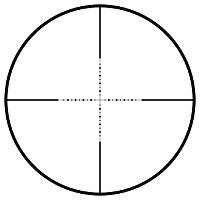 |
 |
| Traditional Mil-Dot Reticle | Half Mil-Dot Reticle | Mil-dot Variant Reticle |
Traditional mildot reticle
A traditional mil-dot reticle features eight dots on the vertical and horizontal posts with four dots on each side of the duplex horizontal and vertical posts.
If you see a mildot reticle with less than or more than eight dots on either of the crosshair axis points, it’s not a traditional mil-dot reticle.
Half mildot reticle
A half mildot reticle is a reticle that also features the eight dots running along the horizontal and vertical axis of the crosshair posts. In addition, this reticle style also includes minor hash marks denoting a “half mil” point between each of the dots.
The half mil marks offer the ability for more precise shooting at long distances versus a traditional mildot reticle.
I’ve tried both and prefer a traditional mildot over a half mil dot reticle, but that’s just one guy’s opinion.
Mildot reticle variant
Several scope brands have taken the mildot reticle concept and modified it in an effort to improve upon the original.
The most popular of these variant mildot reticles seem to be models that blend a traditional mildot with BDC marks or hashes. The end result is a more precise option for bullet drop compensation coupled with the conventional mildot approach for wind drift.
I have a Nikon scope with mil-dots, and I love it. Why didn’t you list any Nikon scope models in your list above?
I’m also a fan of the Nikon brand of scopes and own several myself. I didn’t list any Nikon models in my recommended models above because Nikon has discontinued their entire line of riflescopes.
While there are still a few Nikon mil-dot scope models out of the market here and there, I wanted to focus on scopes that were readily available for purchase.
I’ve been working in the firearms and sporting optics industry for over 20 years, with a personal and professional interest in all things related to rifle scopes, Through a combination of work experience, formal training, and personal experiences, I have extensive experience mounting, testing, and evaluating different rifle scope models across most major optical brands.
